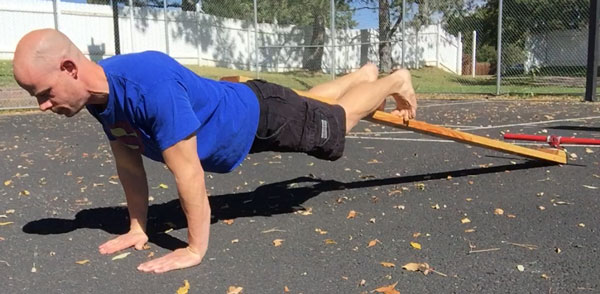
Give me a lever, and a place to lay, and I shall make crazy gains.
– Archimedes (probably)
There are a million reasons why I love calisthenics. Aside from the obvious, calisthenics has allowed me to unleash my inner mad scientist and build a variety of “devices.” It’s amazing what you can create with a little imagination and a few trips to the hardware store.
Most of my designs are home made versions of commercially available products such as suspension straps and calf blocks, but one of my favorites is a unique way to load extra resistance onto a standard push-up that I call the Push-up Lever.
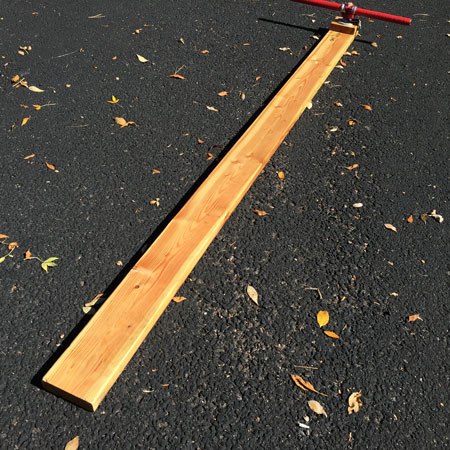 The struggle to load the push-up…
The struggle to load the push-up…
She may not look like much, but that simple plank of wood solves many issues that have plagued anyone who’s tried to add resistance to a standard push-up.
In the time of 10-15 B.C. (Before Calisthenics) I used to do a lot of weighted bodyweight exercises. Most moves were pretty simple, like using a dip belt to load pull-ups, but push-ups were always a struggle for me. I’ve used weight vests, weighted backpacks, stretch bands and stacking weight plates on my back. While all of these methods did produce more resistance, that hard work came at a steep price. Loading the back or neck produced a lot of stress on the spine which felt unnatural and awkward. In some cases, like with sandbags or plates, the weight was difficult to load on my back, plus the load was always prone to shift forcing me to compromise my technique. Using items like bands or chains caused loading on sensitive pressure points like the neck or lower back.
Weight vests seemed to be an ideal solution, but they were expensive and hard to adjust. Even adjustable weight vests required opening numerous pockets and removing small weights. It just wasn’t worth the hassle so I seldom adjusted the load. Despite my effort, I always felt most methods didn’t work very well. I wanted some serious resistance and a plate on the back or a chain around the neck only brought marginal difficulty.
I figured there had to be a better way, so I started to meditate on the ways progressive calisthenics makes push-ups harder. One of the classic methods is to do push-ups on the knees and then make the lever of the body longer by doing them on the toes. So I asked myself, is it possible to further extend the lever of the body out beyond the toes?
That question was the inspiration the Push-up Lever.
What is a Push-up Lever?
The Push-up Lever is the world’s first complete push-up amplification device. Unlike methods that simply load more resistance on pushing muscles, the push-up lever amplifies all of the technical requirements of the push-up. This includes not only the muscles in the arms and chest, but also improving the strength in the core, hips, and legs. It also requires greater scapular control and even more tension in the feet. Many people claim they are sore in their abs and hips the next day after trying it for the first time.
The beauty of the lever is it doesn’t place any excess weight or pressure on your spine, but instead places it on your hips, which can handle the load in a much safer way and with far more control. It’s also something you can easily adjust by sliding where your hips are on the lever. The more you extend the lever out beyond your toe,s the more difficult it makes your push-up.
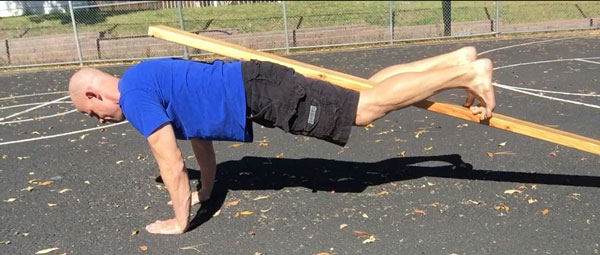
Not only is the lever easier to use and adjust, but it can challenge even the strongest athletes. This is because it makes the traditional push-up more difficult in 2 ways. It makes the lever of your body longer so you have to work against more resistance. It also makes your whole body lift against gravity. So not only are you working with a mechanical disadvantage but you’re also lifting more of your own body weight.
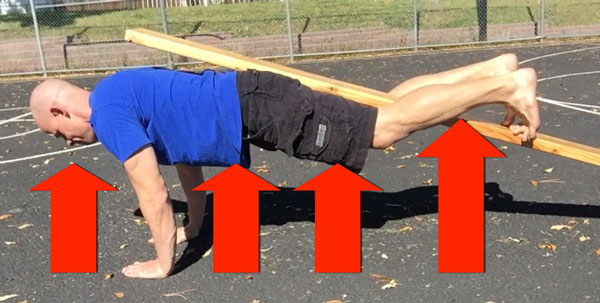
You can use any long slender object as a push-up lever. Pipes, barbells and even small trees can suffice, but I much prefer a 2 x 4 or a 2×6 plank of wood. Make sure any board you use is straight and not warped. Also look out for splinters. You may wish to sand it down and varnish it for a nice finished look.
How do you use a push-up lever?
Using the push-up lever requires a slightly different technique than a standard push-=up. Since the board rests on your hips, you need to slightly elevate your hips so they are the same height as your shoulders throughout the full range of motion. It can take a little bit of practice to use this type of push-up, however I find it to be natural and very useful.
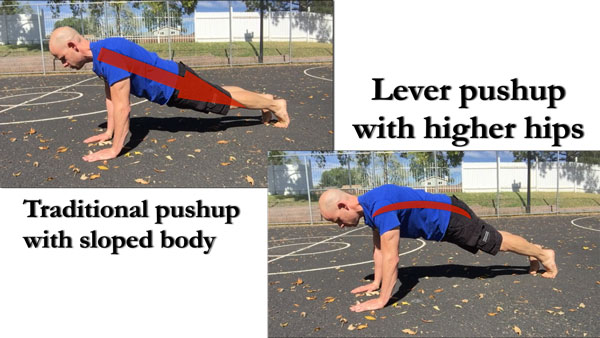
Also, be sure you have the strength to do your push-ups from the floor up. If you struggle to maintain control of your push up while “kissing the baby” with your chest to the floor, you may want to work on the lower range of your push-up for a few weeks before giving the push-up lever a try.
To use a push-up lever, simply lay down as you would in a push-up position and place the board against your hips at the appropriate length. Wrap your feet around the board so you’re “hugging” it with your thighs and the back of your knees. Some people prefer to use a flat foot against the board but I’ve always found more control through dorsi-flexing my feet and pressing my toes straight into the board.

Place your hands in the position you would normally do a push-up with and make your entire body tight, especially your quads, hips, and core. From there, simply do a push-up while pressing your hips up against the board and holding it tight with your legs. The first few times you do this you might feel like you’re sticking your butt up in the air, but I promise you’ll quickly become used to the new position.
Beware of the pressure from the lever pushing your hips down causing your back to sag.
If you’re using the lever at the half point of the board you should have a gap between your upper back and the lever as you push upwards. If the board is touching against your upper back you’ll need to lift your hips up even more to prevent the pressure of the lever going to your spine.
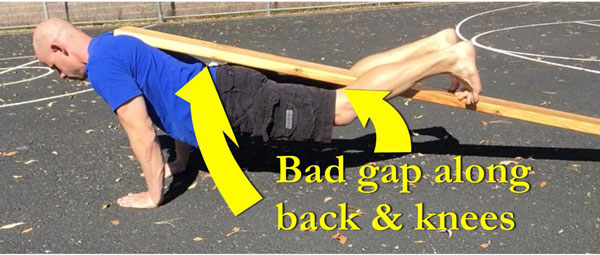
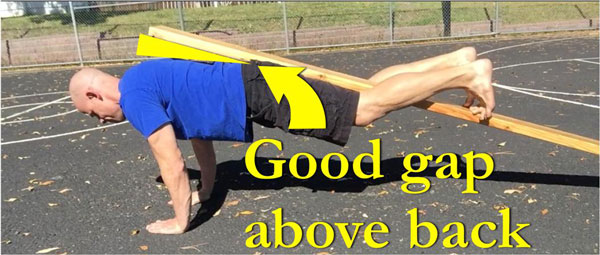
As you lower yourself down to the floor you want to “lead with your chest” so your hips stay at the same height of your shoulders through the full range of motion. Ideally, both your chest and hips should arrive at the ground at the same time and then lift up at the same rate of speed.
Once you have the technique down you can use the push-up lever for any push-up variation you normally use. Wide push-ups, close push-ups, alternating push-ups, medicine ball push-ups, etc.
Want even more resistance?
The classic push-up lever will offer a substantial amount of resistance and challenge to your classic push-ups. If you’re of the masochistic type and want even more resistance you can use the lever to safely add actual weight through the power of leverage.
This is done through adding weight pegs on one end of the lever with a small carabiner to suspend it off of a set of suspension straps or gymnastics rings.
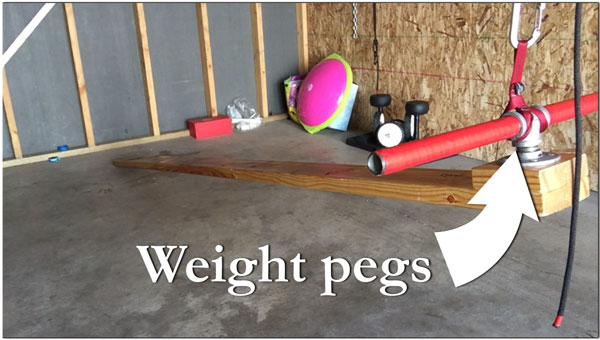
In this position, you’ll use the lever backwards as the weight is suspended above and forward of your body. You’ll use the pivot point very close to your feet but still keep the load of the lever on your hips.
Be aware that it won’t take much weight to significantly load your push-ups. Most of the guys I’ve introduced this set up two will use no more than 10 to 15 pounds of weight. I’ve had powerlifters max out through as little as 40 pounds!
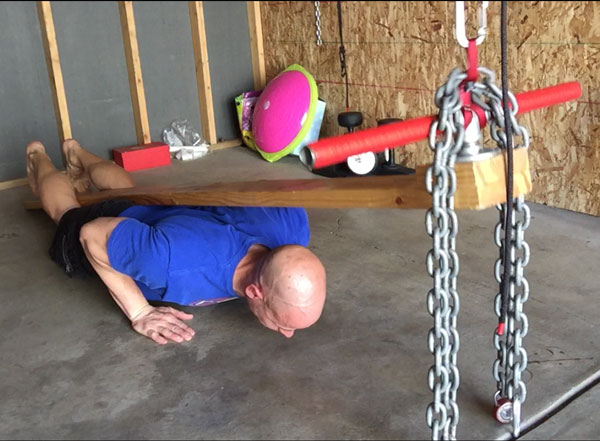
Using the lever in this way is the same as before where you will place yourself underneath and tighten your legs around the lever and push yourself up off the floor while driving your hips into the board.
While the push-up lever can be a great addition to your push-up program, it’s in no way a substitute for good old fashioned progressive calisthenics. When I first discovered it I made the mistake of using the lever for most of my workouts while neglecting the progressive steps towards the one arm push-up. Even though the lever helped me grow much stronger, I still had to fight to rebuild some of the muscle control and coordination I had lost from neglecting the advanced push-up techniques. Ultimately, the push-up lever is just one more tool for your toolbox. It can help you get stronger, but you still have to do the work.
***
Matt Schifferle a.k.a. The Fit Rebel made a switch to calisthenics training 5 years ago in an effort to rehab his weight lifting injuries. Since then he’s been on a personal quest to discover and teach the immense benefits of advanced body weight training. You can find some of his unique bodyweight training methods at RedDeltaProject.com and on his YouTube channel: RedDeltaProject.